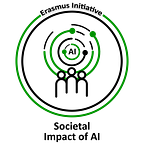How Art Practices Help Us Understanding Artificial Intelligence
‘Intuition and concepts constitute… the elements of all our knowledge, so that neither concepts without an intuition in some way corresponding to them, nor intuition without concepts, can yield knowledge’. Immanuel Kant
Umanesimo Artificial’s summer school ended the last week of July. In collaboration with the Transmedia Research Institute, the cultural organisation combined live performances, workshops, and participatory activities to engage a broad conversation on the role of new technologies and artificial intelligence in our daily lives.
Based in Fano, an Italian town on the Adriatic coast, Umanesimo Artificiale is a cultural association gathering artists and researchers to pose questions about our relationship with technology. These questions not only call for new perspectives to connect and understand the intricate issues of our current times. Questioning the traditional meanings associated with humans and machines also requires expanding the conversation with tech experts and non-experts alike. In the heart of the suggestive Italian town, the historical Palazzo Bracci became an open space to discuss and work hands-on with artificial intelligence and new technologies, while questioning the ever-growing digitalization of society with artists and researchers.
Art practices and performances become a space of encounter for tourists and participants, opening different perspectives and critical tools to interpret the complex interactions between nature, new technologies, and culture. To include everyone in an ongoing conversation, the summer school brings together diverse artists and practitioners to create new points of encounter between technology, art, and ecology.
During the first week, in collaboration with Porto Futuro, participants explored sea organisms’ biomaterials and clam processing waste in Fano Port, while designer Giulia Tomasello investigated alternative approaches to bacteria during the workshop “Coded Biophilia — Hacking Marea.” Meanwhile, photographer and visual artist Emidio Battipaglia presented the workshop “Adversarial Images: Augmented tools for resilient communities,” exploring how photogrammetry, 3D scan, real-time rendering, and artificial intelligence could capture the sea life of Fano’s port.
The weekend expanded on themes such as hybrid encounters of natural and artificial elements with an online workshop by the international collective r00m69, which streamed from the University of Applied Arts in Vienna, a presentation of the students’ work.
The second week shifted focus to robotics, biotechnologies, and artificial intelligence. First, artist and performer Luca Pagan used 3D printing to create sensors connecting body movements to sound, surprising the audience with a live performance on Saturday night. Then, researcher and performer Marco Donnarumma presented a critical reflection on the use of robotic and artificial intelligence for prosthesis during the two-days’ workshop “AI Ethics & Prosthetics.” The artist and researcher Margherita Pevere ended the workshop sessions with ‘Ecologie Instabili’ (Unstable ecologies), a masterclass to reflect on how biotechnologies and ecosystems interact in these critical times.
The summer school closed with a double audio-visual live performance in the evocating Rocca. First, Gábor Lázár opened the night controlling a stroboscopic light show for his AV set. Immediately after, Detroit electro-pioneer duo Dopplereffekt captured the audience with suggestive drum patterns and immersive visuals.
The traditional Italian city of Fano framed the broad and transdisciplinary exploration of the intersections between artificial intelligence, nature, and culture. In the heart of the sea town, workshops and performances opened an on-going conversation to everyone, from passersby to artists to policymakers. Once again, art practices show the potential of creating an immersive experience to engage different perspectives and find new ways of understanding current social and environmental transformations.
As much as we need specialized knowledge to find practical solutions, we also need a space to investigate how these practices interact with social dynamics and the environment, understanding the implication and consequences of what we think as solutions or optimal strategies. Art practices offer intuitions and diverse sights to visualise how different issues connect to each other, calling for a different way of thinking of our society as a whole.
As Kant said, we need concepts and intuitions alike to be able to share knowledge about the world. Each artist used a different background as a starting point to open a wider conversation, rather than proposing a unique method of analysis. More than imagining possible future scenarios, art practices can help us explore a different perspective to imagine the future consequences of our present choices as a society, trying to imagine more sustainable and inclusive ways to use artificial intelligence and rely on nature — re-thinking our role in the ecosystems as contributors rather than the only protagonist.
Umanesimo Artificiale’s summer school is a concrete example of how art practices can bridge scientific and humanistic approaches to give a more comprehensive interpretation of the mutual relations between humans and machines, as well as imagine different scenarios where our agency also means responsibility and respect for the world we are living in.`
